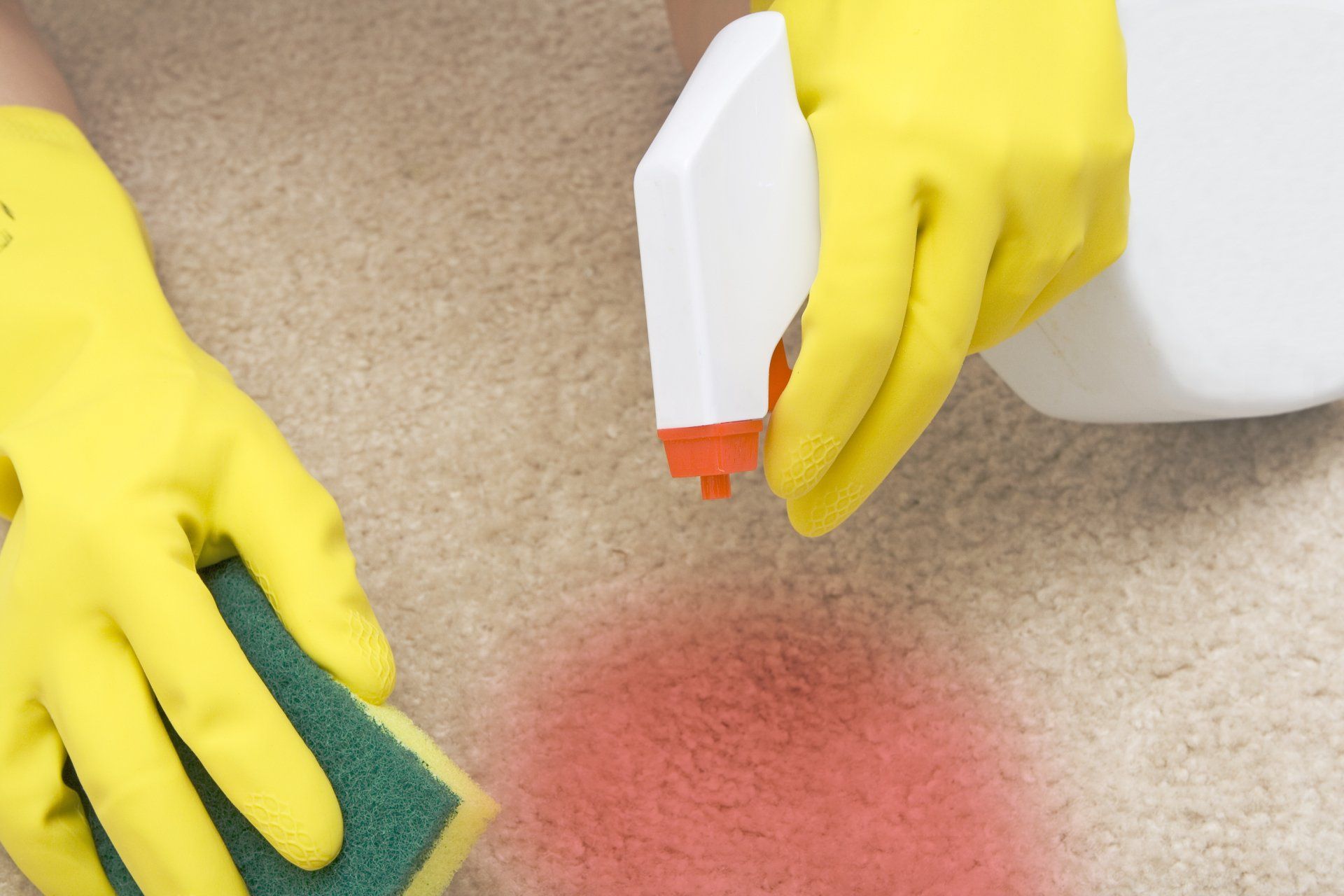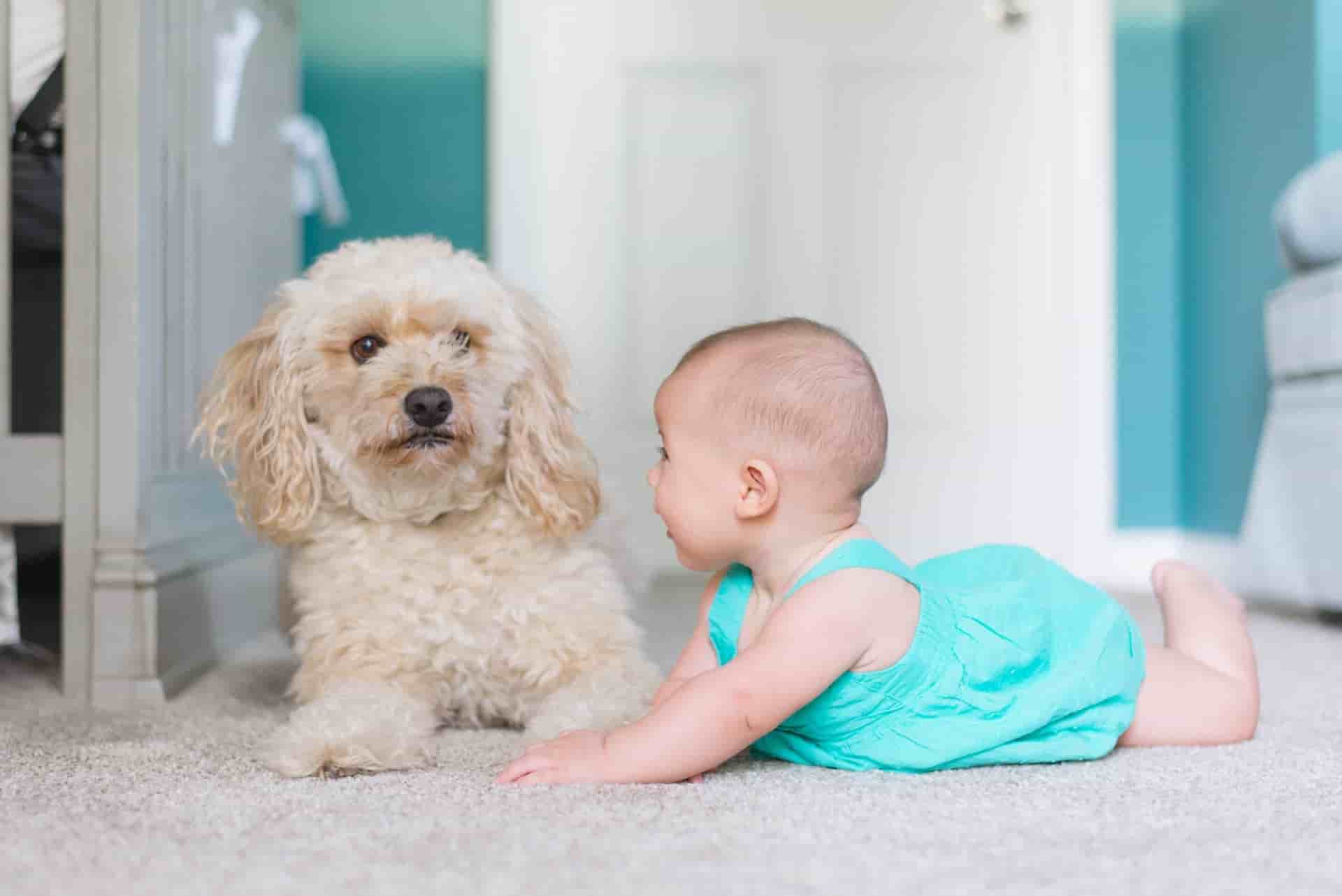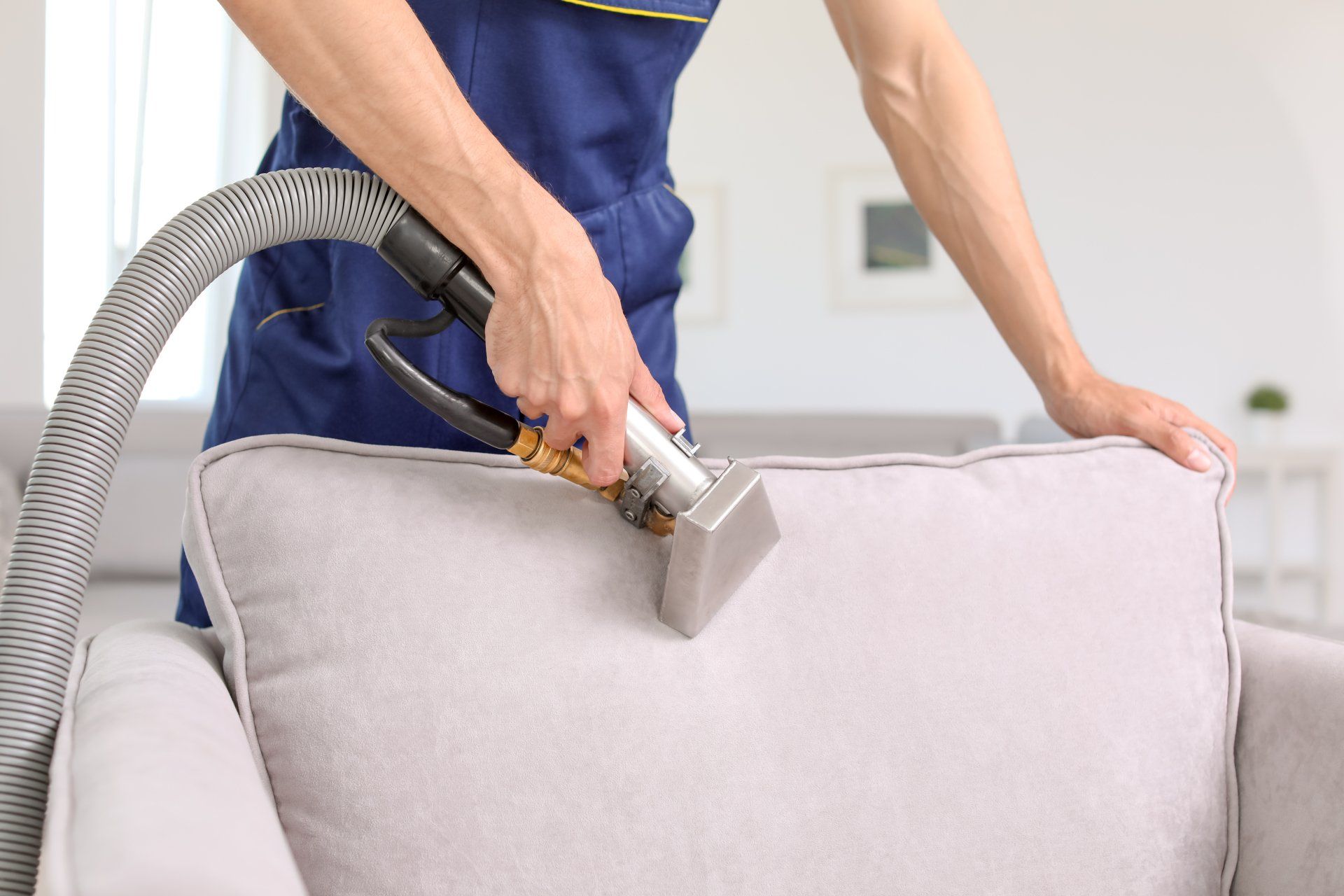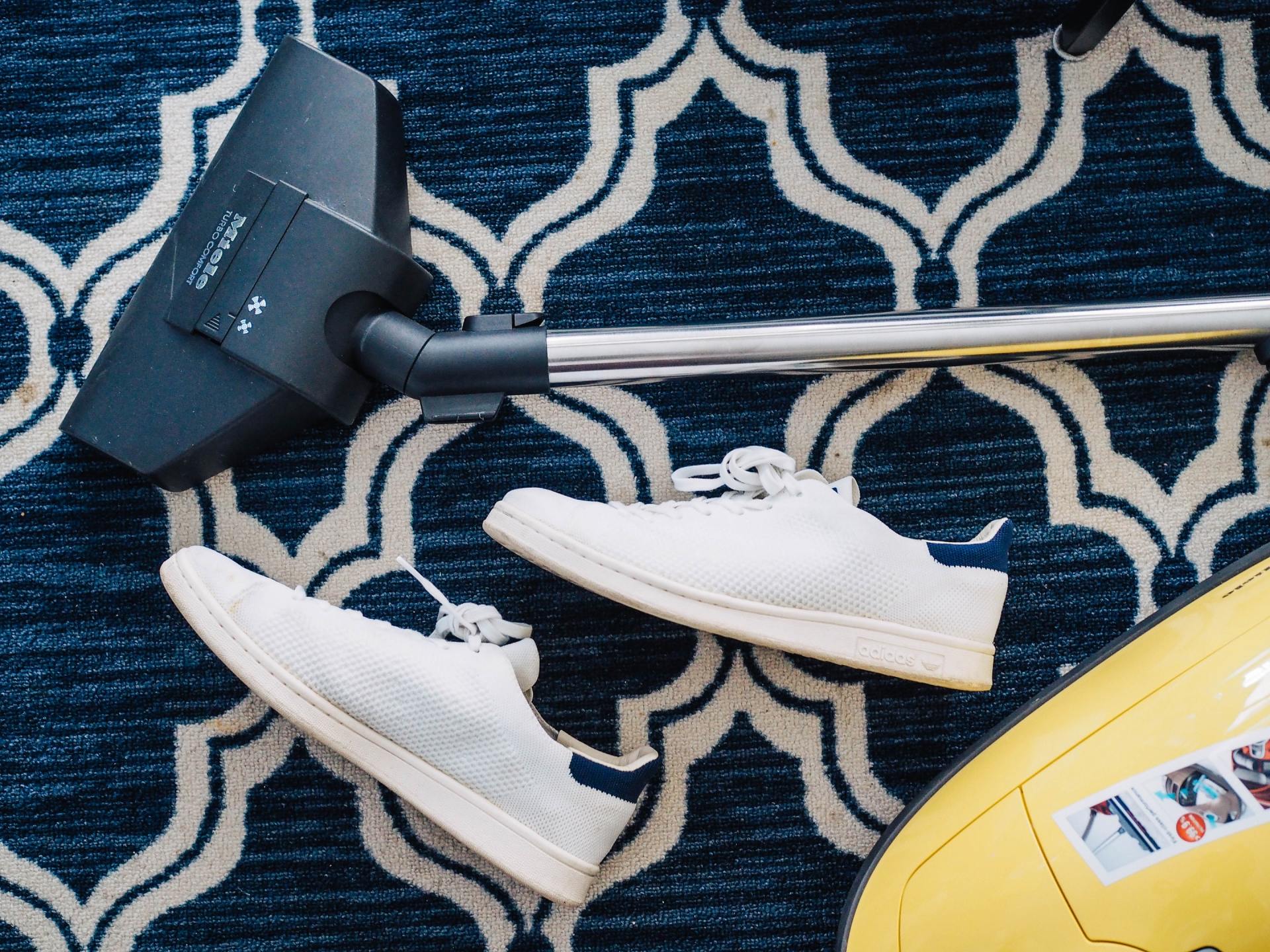Do it yourself stain removal techniques for carpets
Other than buying all-purpose stain removers that claim to clean everything under the sun there are plenty of everyday items you have around the house you can use or mix, to clean spills and accidents. You just need to know what to use on what type of stain. Also, some commercial spot removers take off the protective coatings or break down dyes that are found on most carpets, but the remedies listed here do not.
There are certain stain removal techniques that are important to know when cleaning your own spots and stains from your carpet. Not all stains are alike and that means no single cleaner will work on all of them. If you know what made the stain you can create the proper stain remover designed to clean that specific spot. Let’s start with the basics and then move into more specifics based on what the stain is.
For liquid spills you want to blot do not rub. Trying to rub out a stain just pushes the spill into the pile and can also cause the spill to spread. Instead, blot up liquid spills by covering the area with a clean towel or a thick pad of paper towels. Press down with the heel of your hand or fingertips or even the heel of your foot. Repeat using new dry towels until all the liquid has been absorbed. If the spill has a very large amount of liquid, use a wet-dry vacuum (if available) to remove most of the material before blotting.
One of the most versatile do it yourself cleaners would simply be soapy water. You can mix your own spot-cleaning solution by diluting a few drops of preferably clear dish washing soap or laundry detergent in water. Dish detergent is good at breaking down food off your dishes and will also be good for cleaning food stains off your carpet. Laundry detergent likewise is good for breaking down dirt and grime off your clothes so that would be your go to for dirt and grime on your carpet. Use up to 1 teaspoon per cup of water. It’s best to start with less detergent. If you start with ¼ teaspoon you can always add in increments of ¼ teaspoon. My philosophy as a professional cleaner is to use as few chemicals as possible. In the cleaning industry more is not always better. You can leave too much residue behind and that can cause a new spot to return over time.
Rinsing after cleaning is an important step to eliminate a returning spot. To remove over the counter spot-cleaning solutions, home made soapy water solutions or some of the solutions I’ll mention later, you want to spray the area you cleaned with a light mist of plain water then blot with dry paper towels. Repeating these two steps of spraying with plain water and blotting one or two more times should draw most of the cleaner out of your carpet.
A final step for DIY would be to apply one last light spray of plain water and cover with a pad of about 10 white (no colors or prints they can bleed dyes into your carpet) paper towels. Put as heavy a weight as you can find to put on top and leave several hours or even over night. The water and any residue still there will wick into the paper towels.
Now for some specific stains and how to clean with everyday products you may have around the house. Let's just do it.
Stain Type: Organic Stains like blood, berries, coffee, gravy, chocolate, and ice cream
First thing to do is scrape up any excess with a spoon. It is important to get as much off the carpet as soon as possible. Next blot, NOT scrub, with paper towels. This will assure that you have absorbed all the excess material. Then mix ¼ tsp. Of CLEAR dish or laundry detergent with 1 cup WARM water with a spray bottle or damp sponge. Be sure to use sparingly. The biggest mistake even professional carpet cleaners make is to use too many chemicals. This will only contribute to the spot reappearing at a later time. Let the mixture sit on the carpet for at least five minutes and then blot with paper towels. Repeat this step as necessary.
Next, apply some plain water and place a thick pad of paper towels with a very heavy weight on top. This will absorb the remainder of any stain or chemical left behind. If there is still a slight stain you can use some 3 % hydrogen peroxide. There are 2 ways you can apply. One dab the hydrogen peroxide with a towel and then dab the spot. Or put the hydrogen peroxide in a spray bottle and saturate the stained area. Leave it on the carpet for an hour and repeat a 2nd time if necessary.
The last step is spray some plain water on the spot and wet it fairly well without over saturating. Cover with a wad of 10 or more plain paper towels (no prints). Place a heavy weight on top and let stand for several hours or over night.
Stain Type: Mud
If there is a large amount of mud scoop up the excess with a large serving spoon, then allow to dry. When fully dry break off pieces and vacuum thoroughly. This should take off most if not all the dried dirt. Believe it or not you’re better off waiting until it’s dry rather than fighting with it when wet. Our first instinct is to get it right away and usually that IS the correct thing to do... except with mud. After vacuuming if there is still some stain left spray lightly with soapy water. Mix of 1/4 teaspoon of CLEAR laundry detergent and a cup of warm water in a spray bottle. After spraying lightly with the detergent mixture blot with paper towels. If the spot is transferring to the towels just keep rotating new towels until it no longer is coming up. If the spot is not completely gone repeat the spray and blot process as needed.
The last step is spray some plain water on the spot and wet it fairly well without over saturating. Cover with a wad of 10 or more plain paper towels (no prints). Place a heavy weight on top and let stand for several hours or over night.
Stain Type: Alkaline such as urine.
We love our pets. Even the best of pets eventually has an accident. A urinary infection, old age or maybe we didn't get home in time to let them out. Pet accidents are the most commonly requested service for my customers to call. A one time accident or infrequent small accidents can be cleaned without needing a professional. A large dog with a full bladder is best handled by a professional. For smaller issues white vinegar has many uses as a cleaner. That will be a topic for a future blog. One such use is for urine from dogs and cats. But there is a timeline on whether to use vinegar or soapy water. Urine is acidic when it first comes out of the body but within 30 minutes it becomes very alkaline. There is a science to carpet stain cleaning as I mentioned earlier. The more you know the science the better chance you have of success. What works best on an acidic spot is different than what you would use on an alkaline.
If you are cleaning the urine within 30 minutes of seeing your pet pee on the carpet you can use the soapy water method. Blot up the spill with paper towels. Press down with the heel of your hand or fingertips or even the weight of your foot. Repeat using new dry towels until all the liquid has been absorbed. If the spill has a very large amount of liquid, use a wet-dry vacuum or small extractor(if available) to remove most of the material before blotting. Then mix 1/4 teaspoon of CLEAR laundry detergent and a cup of warm water in a spray bottle. After spraying lightly with the detergent mixture blot with paper towels. If the spot is transferring to the towels just keep rotating new towels until it no longer is coming up.
If you notice the spot beyond 30 minutes vinegar would be best. Mix the white vinegar equally with water. 1 cup vinegar to 1 cup water and spray the affected area. Blot with paper towels. If stain persists, repeat until spot is gone.
The last step is spray some plain water on the spot and wet it fairly well without over saturating. Cover with a wad of 10 or more plain paper towels (no prints). Place a heavy weight on top and let stand for several hours or over night.
Stain Type: Acidic. Ketchup, cough syrup, mixed drinks, soy sauce
Ammonia is another common household cleaner you may readily have around the house that can serve many purposes. It is an alkali cleaner that can neutralize acidic spills. It is safe to use on synthetic carpets and fabrics but should never be used on wool. Like some other cleaning agents, it can destroy wool fibers. And you also want to avoid breathing the fumes as ammonia can be somewhat toxic. Use in a well-ventilated area. In this time of Covid-19 everyone has masks of some kind so using a mask would also be helpful. Use the same procedures as described in previously by blotting liquids or scraping off solids with a spoon or knife. Mix 1 tablespoon of ammonia with ½ cup water in a spray bottle that has been rinsed thoroughly and spray top has been rinsed as well. Blot the area with a white terrycloth towel or white (not printed) paper towels. Rinse by spraying plain water and blotting again. If the stain persists you can spray with soapy water as described in the procedure for organic stains above. Blot the area again with towels and then rinse again with plain water. At this point it would be ok to gently scrub the stain with a towel. You never want to scrub first or you will spread the stain but after spraying and blotting several times a gentle rub might be what is needed. If the stain continues to persist you can use hydrogen peroxide also described in the procedure for organic stains above.
The last step is spray some plain water on the spot and wet it fairly well without over saturating. Cover with a wad of 10 or more plain paper towels (no prints). Place a heavy weight on top and let stand for several hours or over night.
Stain Type: Tar, Grease, Crayon, Hand Lotion and Makeup
There are several cleaners you may have around the house. A good place to start is rubbing alcohol. It’s a mild “dry cleaner” If you are looking for alternatives to commercial solvents this would be a good first step. As with all previous types of stains you want to scrape and blot as much as possible from the carpet first. You can use full strength no need to dilute. Apply the alcohol to a towel or cotton ball. Press hard and blot. Continue the process on a clean area of towel or clean cotton ball. Be patient this may take several applications. Do not scrub the area at this point or you are sure to spread the stain and make more work for yourself. Ask me how I know. We learn by our mistakes. 32 years in business has taught me a lot. Once you’re certain you will not spread the stain it would be ok to apply some more alcohol to the towel add some pressure and scrub out the remaining stain.
Grease and tar etc are petroleum-based stains and therefore are not receptive to soapy water etc because they are not water soluble. If the rubbing alcohol doesn’t work, there are several citrus based solvents you could pick up at your local hardware or big box store
Stain Type: Toilet Bowl Cleaners, Bleach, Acne Medications, Mustard, Lye Based Drain Cleaners, Plant Fertilizers, Iodine, Permanent Marker
I'm sorry to say your stain is permanent. There are stains and then there are STAINS. There are spots that sit on top of your carpet such as the ones that have been mentioned and more to come. Then there are stains that either take the color OUT of your carpet or put permanent color INTO your carpet. There is nothing a cleaner can do to help either of those conditions. But your carpet isn’t necessarily a lost cause yet. A professional carpet installer may be able to take a piece of carpet from a closet or other area that will not be noticed and patch the area. Or if possible, you could rearrange your furniture to cover the area or maybe an inexpensive area rug could cover the affected area. If none of those are feasible or acceptable to you and you can’t live with a permanent stain your only alternative is new carpet.
Stain Type: Wax
There is something very special about candlelight. A romantic dinner or ambiance in a room. My wife and I enjoy both. If I could give one piece of advice find a manufacturer that sells white candles rather than colored candles. We enjoy some scented candles at times, and we’ve found that our scented candles do not need to have color in them. Color filled candles are much more difficult to clean out of a carpet.
Because candle wax is hot the carpet fiber expands. Then it cools and the fiber contracts making it more difficult to pull the color out. If you have a colored carpet similar to the candle color this may not be as noticeable but if you own a white carpet you might want to hire a professional cleaner to do this. The best procedure for DIY would be to scrape as much up as possible with a butter knife or spoon. Be careful not to cut or fray the fibers. Here is where many people would say to use a brown paper bag but I have never had success that way. And it is possible to melt the fibers. Get a white terrycloth towel and wet it down by soaking it in water. Wring it out so it is still wet but only damp/wet. Spray the carpet also with warm water so it it damp. You want wet heat not dry heat. Dry heat will melt the carpet fibers. Take the towel and fold it in half and place it on the wax. Take a steam iron with the proper amount of water in it and set it to steam. Place the iron on the towel and make sure none of the iron directly touches the carpet. Press steam and hold the iron on the towel for approx. 20 seconds. If all the wax is not completely removed, you can move the towel slightly or refold it to a clean area. Make sure it is still damp/wet and repeat. If there are multiple spots or one that is too big for the size of your iron just re wet the towel and fold it to a clean area and repeat.
I want to emphasize again to keep the towel damp/wet and never touch the iron directly on the carpet.
Stain Type: Nail Polish
Nail polish is very tricky and success will depend on how much polish is spilled. A whole bottle spilled out and hardened will be impossible even for the most skilled professional cleaner. A few drops or small smear and you might be able to skillfully and patiently remove it. If it’s still wet and it hasn’t sunk into the carpet you may be able to spoon it off gently (IT IS IMPORTANT TO TEST NAIL POLISH REMOVER ON AN INCONSPICUOUS AREA FIRST BEFORE ATTEMPTING THIS PROCEDURE). Dab on non-oily nail-polish remover with a cotton ball or cotton swab. Again, blotting is almost always the first and most important step in spot cleaning any spill. Press the cotton ball gently straight down for a couple seconds. Pull up and look. If it is still there apply some more nail polish remover to a clean cotton ball or swab and repeat. If the remover is coming up into the cotton ball just keep repeating the process. Blot and repeat until it is gone. If the polish is gone but there is still color in the carpet you can use hydrogen peroxide as discussed in the previous paragraphs. Dab the hydrogen peroxide with a cotton ball and then blot the spot. If that doesn’t work put the hydrogen peroxide in a spray bottle and saturate the stained area. Be careful not to over spray the area or over wet with the peroxide. Leave it on the carpet for an hour. Then rinse with plain water and blot with paper towels. Then use wad of towels and a heavy weight to wick the residue out of the carpet..
Some final thoughts
Now that you have some tools at your disposal I would like to leave you with advice from 32 years in the carpet cleaning business.
One. More is not better. By that I mean if the directions call for a teaspoon then 2 teaspoons must be better right? No it is not. Using too much cleaner will not clean better and will likely leave too much residue behind. What that does is create a dirt spot over time. I hear it all the time. A customer says they cleaned a spot only to have it come back later. They repeat the cleaning and the spot returns again. One customer said she cleaned a small spot the size of a half dollar and it kept coming back. She wanted me to try so it wouldn't come back. When I got there her spot had grown to the size of a basketball.. Each time she cleaned it she over sprayed a slightly larger area. This is natural. But each time she cleaned it she put more chemical down. Creating the conditions for the spot to come back. Spot cleaning 101 is "less is more"
Two. You need to know when to quit. This is a lesson I learned early on in my business. As a young idealistic cleaner I was determined never to be defeated by soil and stains. I learned I can never be undefeated. I have a very high winning percentage but I have learned that sometimes "noticeably better" is the best alternative. Trying too hard can actually make it worse.
Three. Patience is key. Don't skip steps. Each one is important. Always test what you are about to do in an inconspicuous area. Follow the directions and the final step of rinsing and covering with paper towels and a heavy weight will help keep from having too much residue create a dirt spot later.








